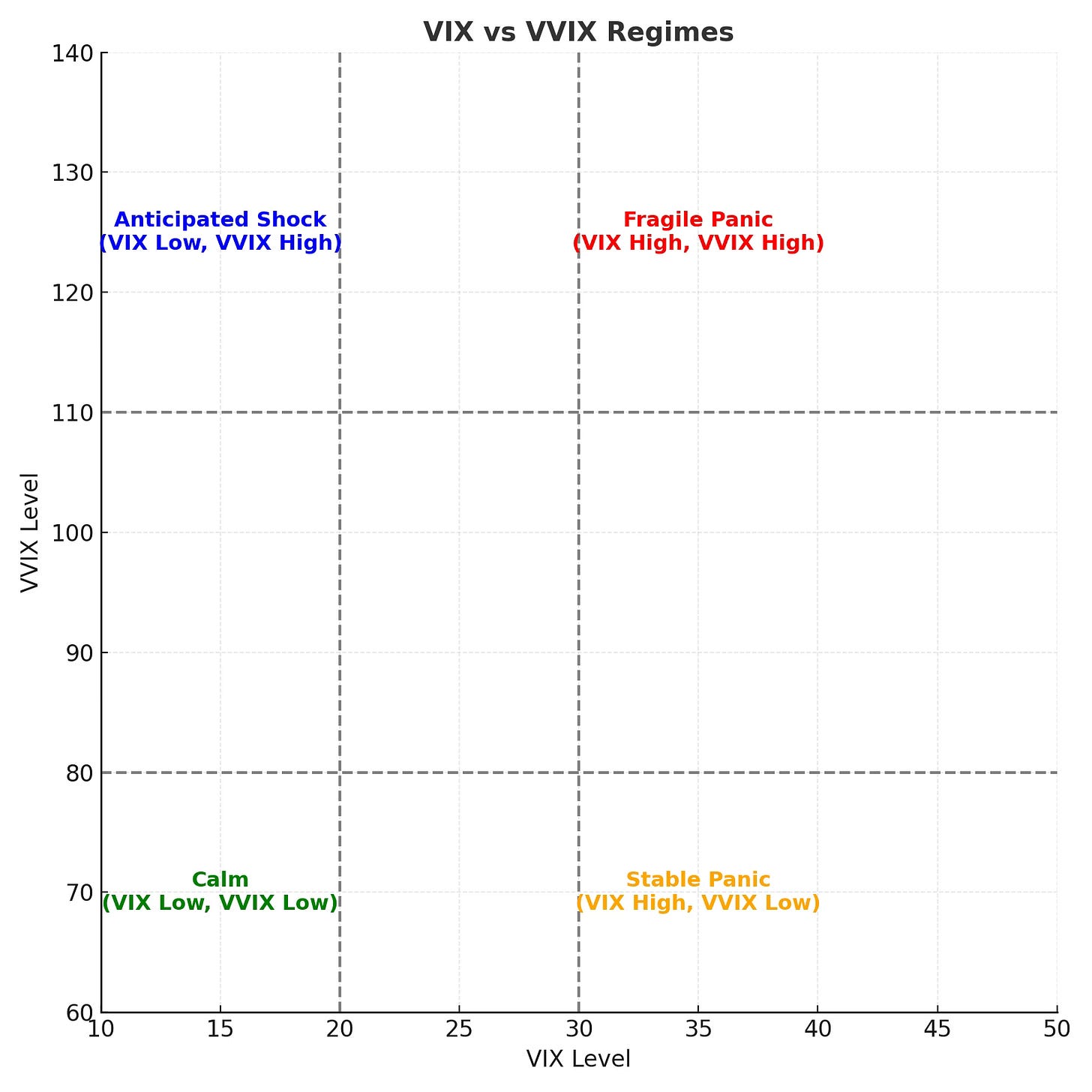Most traders have heard of the VIX, Wall Street’s famous “fear gauge” that measures expected volatility in the S&P 500. But far fewer are familiar with its cousin, the VVIX.
The VVIX — often called the “VIX of the VIX” — measures how volatile the VIX itself is expected to be. In other words, it tracks the market’s expectations for swings in volatility.
For beginners, that may sound abstract, but it’s actually a powerful tool for understanding when fear in the market is not only high, but unstable.
What Is VVIX?
VIX tells you how volatile the S&P 500 is expected to be over the next 30 days.
VVIX tells you how volatile the VIX is expected to be.
Put simply:
If the VIX is the fear gauge, the VVIX is the gauge of fear about the fear gauge.
Why Is VVIX Often Overlooked?
The VVIX isn’t quoted on financial news channels as often as the VIX because:
It’s more specialized — most retail traders already struggle to understand the VIX.
It’s mainly used by professionals, especially options traders and volatility specialists.
It’s indirect — while the VIX connects directly to stock market swings, the VVIX is one step removed, focusing on volatility of volatility.
But just because it’s overlooked doesn’t mean it’s useless. For traders who want deeper insight, the VVIX can provide valuable clues.
The Relationship Between VIX and VVIX
The VIX and VVIX are related but not identical:
VIX High, VVIX High: Panic is not only here, but unstable. Markets are bracing for extreme uncertainty.
VIX High, VVIX Low: Fear is elevated, but the market is confident it understands the risk.
VIX Low, VVIX High: Complacency in stocks, but traders are quietly hedging for a potential volatility shock. This often foreshadows sudden spikes.
VIX Low, VVIX Low: Calm across the board. Markets are stable and confident.
One way to think about it:
The VIX tells you how nervous people are today.
The VVIX tells you how nervous people are about tomorrow’s nerves.
How Traders Can Use VVIX in Everyday Trading
Confirming VIX Signals
If the VIX spikes but the VVIX stays calm, the fear may be temporary.
If both spike together, the move is more likely to be sustained.
Anticipating Volatility Shocks
A rising VVIX while the VIX is still low can signal that traders expect volatility to jump soon. This can warn of sudden pullbacks.
Options Pricing Insight
VVIX influences the cost of options on volatility products (like VIX futures or VIX ETFs).
When VVIX is high, volatility options become more expensive — making hedges pricier.
Risk Management
Retail traders can use VVIX as a background indicator:
Above 110–120: Markets are braced for turbulence. Position sizing and stops should be more conservative.
Below 80: Volatility is steady, and markets are unlikely to see sudden shocks.
Why VVIX Matters
While the VIX measures fear, the VVIX measures fear of instability. Both matter because:
The VIX can tell you when markets are stressed.
The VVIX can tell you when that stress is fragile and likely to swing even more violently.
Ignoring the VVIX means missing a deeper layer of market psychology.
Key Takeaways
VVIX = volatility of volatility, sometimes called the “VIX of the VIX.”
It’s often overlooked, but it provides insight into how stable or unstable the VIX itself is.
Together, VIX and VVIX offer a two-dimensional view of fear:
VIX = how much fear.
VVIX = how uncertain that fear is.
Traders can use VVIX to confirm VIX signals, anticipate shocks, and better manage risk.
Final Thoughts
Most beginners stop at the VIX — and that’s fine for a basic read on fear. But adding the VVIX to your toolkit gives you an extra layer of insight.
Think of it this way:
If the VIX is the weather forecast, the VVIX is the confidence in that forecast.
For traders who want to sharpen their understanding of market psychology, the VVIX is a hidden gem that deserves more attention.




